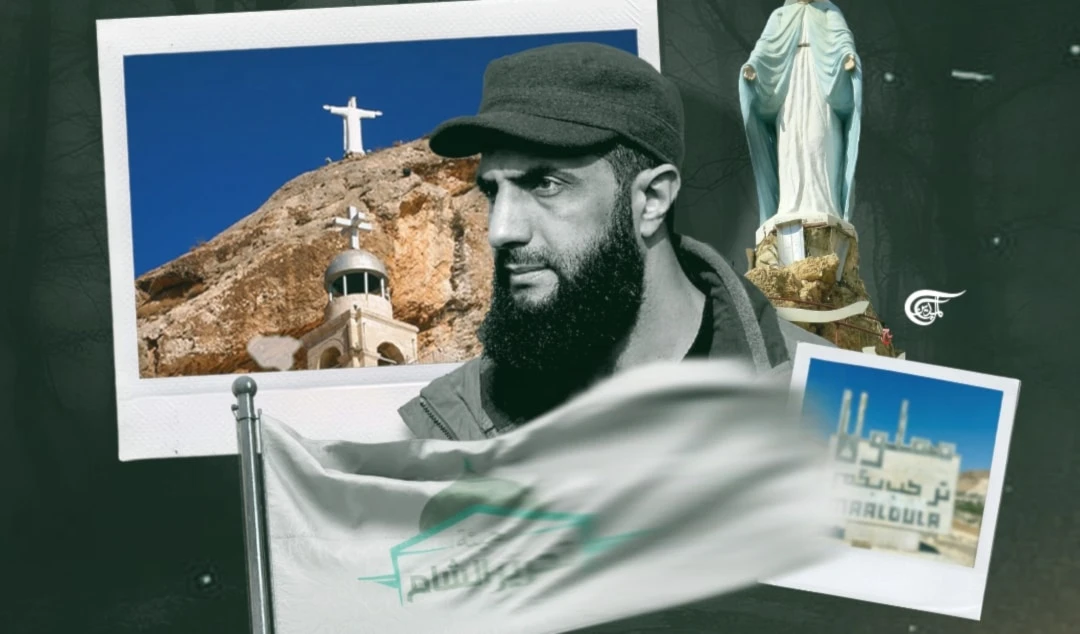Who is a civilian? - The shifting standards of reporting in the Syrian context
Jalyssa Dugrot and Angie Bittar critically examine the Syrian Network for Human Rights (SNHR), exposing its inconsistent methodology, politicized casualty reporting, and troubling alignment with Western narratives on Syria.
-

What should we make of these methodological inconsistencies with international casualty recording standards? (Al Mayadeen English; Illustrated by Batoul Chamas)
The Syrian Network for Human Rights (SNHR) is the top cited organization by the US State Department on Syria, with the aim of raising awareness amongst Syrians of their civil and political rights, promoting conditions for human rights, and advocating for transitional justice, accountability, and democratic change. Founded in June 2011 by current CEO Fadel Abdul Ghany, the SNHR has been actively collecting data and publishing thematic and periodic human rights reports throughout the Syrian civil war and since the fall of the Assad regime.
Despite claims of impartiality, independence, and a statement explicitly acknowledging that the SNHR abstains from any “subjective analysis or justification of attacks,” the organization’s recent reporting in the wake of renewed violence across the Syrian coast and pockets of Alawite communities throughout the country, frankly all reporting across its organizational lifespan, raises critical questions about their credibility and objectivity in the best case scenario.
On March 11, 2025, just two days after the Syrian government stated its public commitment to investigate the extrajudicial killings of hundreds of primarily Alawite civilians across the coastal countryside, the SNHR released a preliminary report documenting “violations committed in the aftermath of the attacks carried out by non-state armed groups linked to the Assad regime,” citing the extrajudicial killings of 803 “people” between March 6 and 10. This same report commended the Syrian President, “considering this a positive step that seriously reflects the transitional government’s seriousness” in achieving justice, despite the fact that the killings were actively ongoing and carried out at least in part by state security forces at the time of publishing.
This report comes at odds with the norms of SNHR’s reporting over the past decade; in a May 2013 report detailing violations that occurred across villages of Baniyas that are comparable in death tolls and in the details of the allegation, the title calls the incident a “blatant ethnic cleansing” and the term massacre appears 15 times. The report assigns motive to the attacks, describing them explicitly as collective punishment for instances of opposition to the regime. Unlike the March 2025 report, which opts to report the killing of “people” in passive voice, as a response to attacks by Assad-aligned groups, the 2013 report defined the casualties explicitly as “civilians” and managed to clearly identify and condemn the perpetrating forces. No detailed methodology is provided for either report, and both concede that they did not obtain any information from the scene(s).
This is not unique behavior for the SNHR, evidenced by a 33-page June 2015 report on documented sectarian massacres and ethnic cleansing, titled “The Society’s Holocaust,” which documented 56 sectarian massacres between March 2011 and the date of publication. This report suggested that a staggering 98% of casualties were civilian victims, with the former Syrian government responsible for the overwhelming majority of the casualties, at 3004 documented civilian victims. By comparison, the same report attributed only three massacres to ISIS, citing the killing of only 58 civilian victims at the hands of ISIS forces during this time period. SNHR lists many alleged massacres by the government as “sectarian” despite no rationale to support the claim of sectarian motivation and the organization’s own claim that it does not speculate on the motives of attacks.
As of March 2024, a 78-page report asserts that the now former Syrian regime was responsible for 201,206 explicitly civilian victims across the 13 years of civil war; by comparison, they found ISIS responsible for 5,056 civilian victims and Hay'at Tahrir al-Sham responsible for 538 civilian victims across the same 13 years. These numbers seem inconceivable, given that the Armed Conflict Location & Event Data (ACLED) identified 99 separate incidents of violence against civilians attributed to HTS between 2017-2018 alone. How are these death counts even possible, and where are they coming from? Why could the SNHR easily identify civilian victims last year, but now opts for language of uncertainty?
The public methodology of the SNHR offers little clarity, with no definition of “civilians” provided, despite the definitions of massacre, detainee, forcibly disappeared person, citizen journalist, media worker, medical personnel, and combatant all explicitly laid out and consistent with ICRC standards. Another glaring inconsistency with all international standards is the network’s statement that in cases “of the absence of conclusive evidence of the victim’s states and of resulting uncertainty over his/her classification as a civilian or a combatant, [the SNHR] registers him/her as a civilian (2025, pg.6). No clarification is provided regarding what would be considered evidence of combatant status, and this statement indicates that there is no category for unclassified individuals, an oversight which drastically impacts the framing and analysis of any data collected under this system.
Curiously, in older versions of methodology, obtainable only via internet archives, civilian victims were explicitly defined as “victims who are killed by any one of the parties listed who are involved in perpetrating violations in Syria,” a definition that surprisingly leaves out the international standard that civilian status is defined by non-engagement in hostilities (2016, pg. 6). By contrast, “the likelihood of documenting military victims from the armed opposition is small, considering the difficulties faced…in obtaining accurate information from the battle fronts, as well as the understandable reluctance of the victims’ families and friends to reveal or publish any information.”
The victim classifications above appear nearly verbatim in versions of the document dating back to 2016 and disappear in 2020, indicating that the SNHR has never had a consistent or reliable mechanism distinguishing civilian and combatant casualties. Interestingly, the earliest iteration obtained, dated 2014, explicitly notes that the one case of casualties the SNHR does not attempt to record is victims that originate from “government forces like security forces, intelligence, Shabiha and army,” with no further definition or explanation of the term Shabiha[1] or how an individual could receive that label (2014, pg.3).
What should we make of these methodological inconsistencies with international casualty recording standards? How should we interpret the recent reports of the SNHR, particularly given their stark contrast to historical reporting? If a cursory examination of an allegedly independent human rights organization uncovers a litany of organizational malpractice, then the minimum requirement is a critical examination of the organization, its work, and the policy it has supported.
[1] From the Arabic word meaning ‘ghost’, this is a colloquial and generally derogatory term for various loosely organised Syrian militias loyal to the Ba'athist government and the Assad family prior to the regime's collapse.

 Angie Bittar
Angie Bittar
 Jaylssa Dugrot
Jaylssa Dugrot
 6 Min Read
6 Min Read









